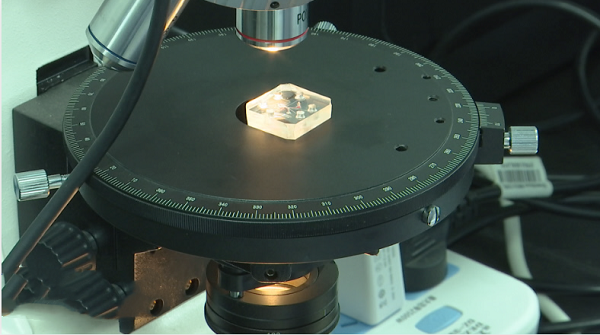Hefei firm builds human organs in integrated circuit chip
A company in Hefei – capital of East China's Anhui province – has penetrated the extraordinary world of reproducing the functionality of human organs within the confines of a computer chip, in a science-cum-art called Organs on Chips, or OoCs.
An organ on a chip is a multi-channel 3D microfluidic cell culture, integrated circuit that simulates the activities, mechanics and physiological response of an entire organ or an organ system.
Anhui Luohua Biotechnology Co Ltd, based in Hefei, has made them and has achieved a leading position in the world in the field of organ chip technology.
Unlike conventional computer chips, organ-chips have rubbery surfaces and have multi-layer structures inside. Taking a liver chip as an example, it has three interior layers.
The first layer is for the inflow of arterial blood to provide nutrition; the second layer is to simulate the internal exchanges of substances in the organ, while the third layer collects metabolites for researchers to test further.

A liver chip developed by Anhui Luohua Biotechnology Co Ltd, based in the Hefei high-tech zone. [Photo/WeChat iD: hefeigaoxinfabu]
"Simply put, the organ chip is a chip manufacturing method to build a 'high-rise building' with a real organ environment between the square inches – and then implant different cells to reconstruct the structure and function of human organs and tissues," said Liu Liangliang, a technical leader at the company.
"We provide it with some microenvironment – including oxygen, carbon dioxide, temperature and some culture medium or therapeutic drugs – so that the cells can grow inside well," Liu added.
In terms of their role, OoCs can accelerate the development of innovative drugs by replacing animal experiments and achieve more accurate allopathic treatments.
Moreover, because of the great species differences between animals and humans, many of today's drug development needs can no longer be met through animal experiments.
Founded in 2019, the Hefei startup was established by an entrepreneurial team from the University of Science and Technology of China and it has established cooperation with over 30 universities, institutes and medical institutions.



